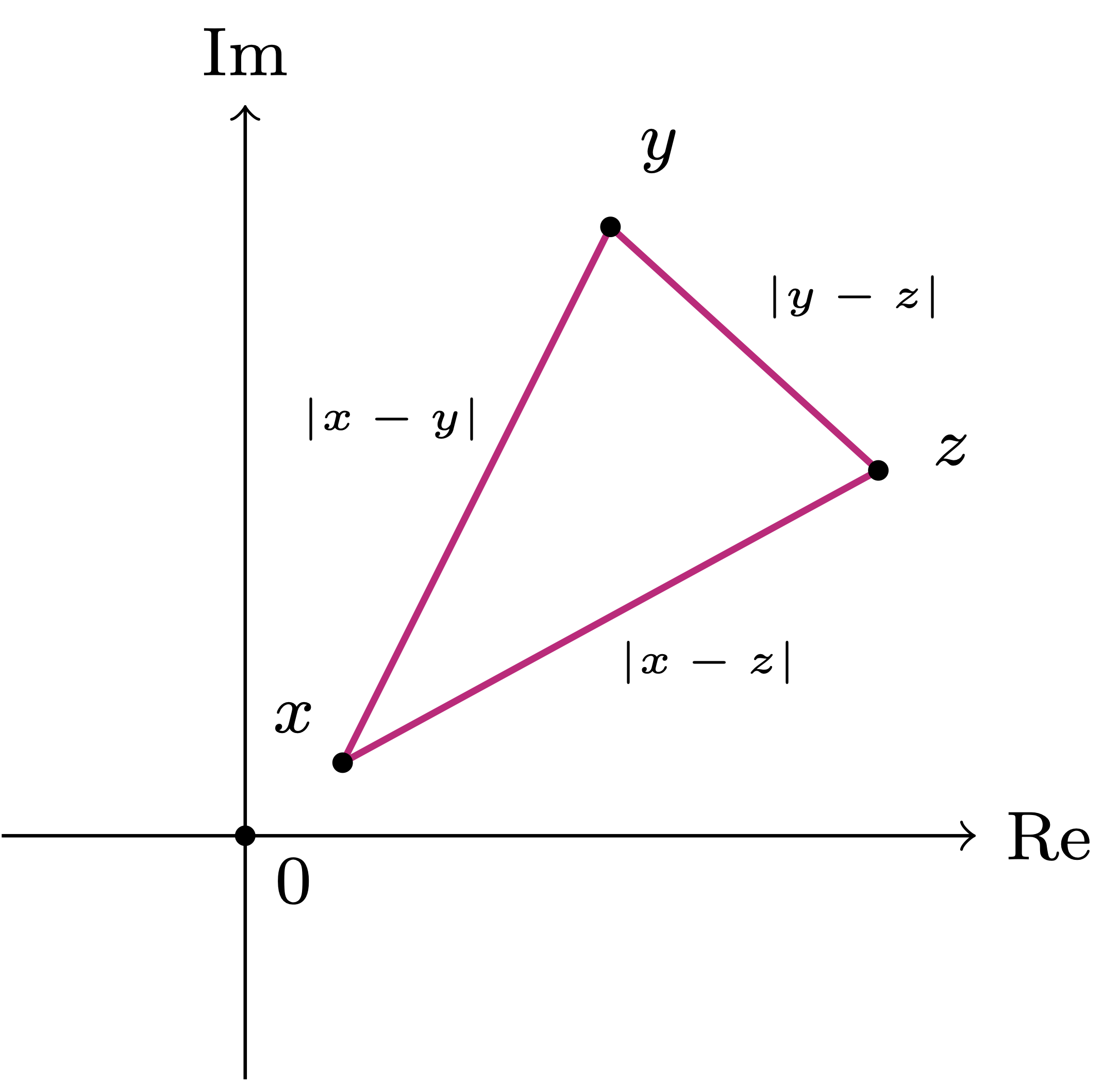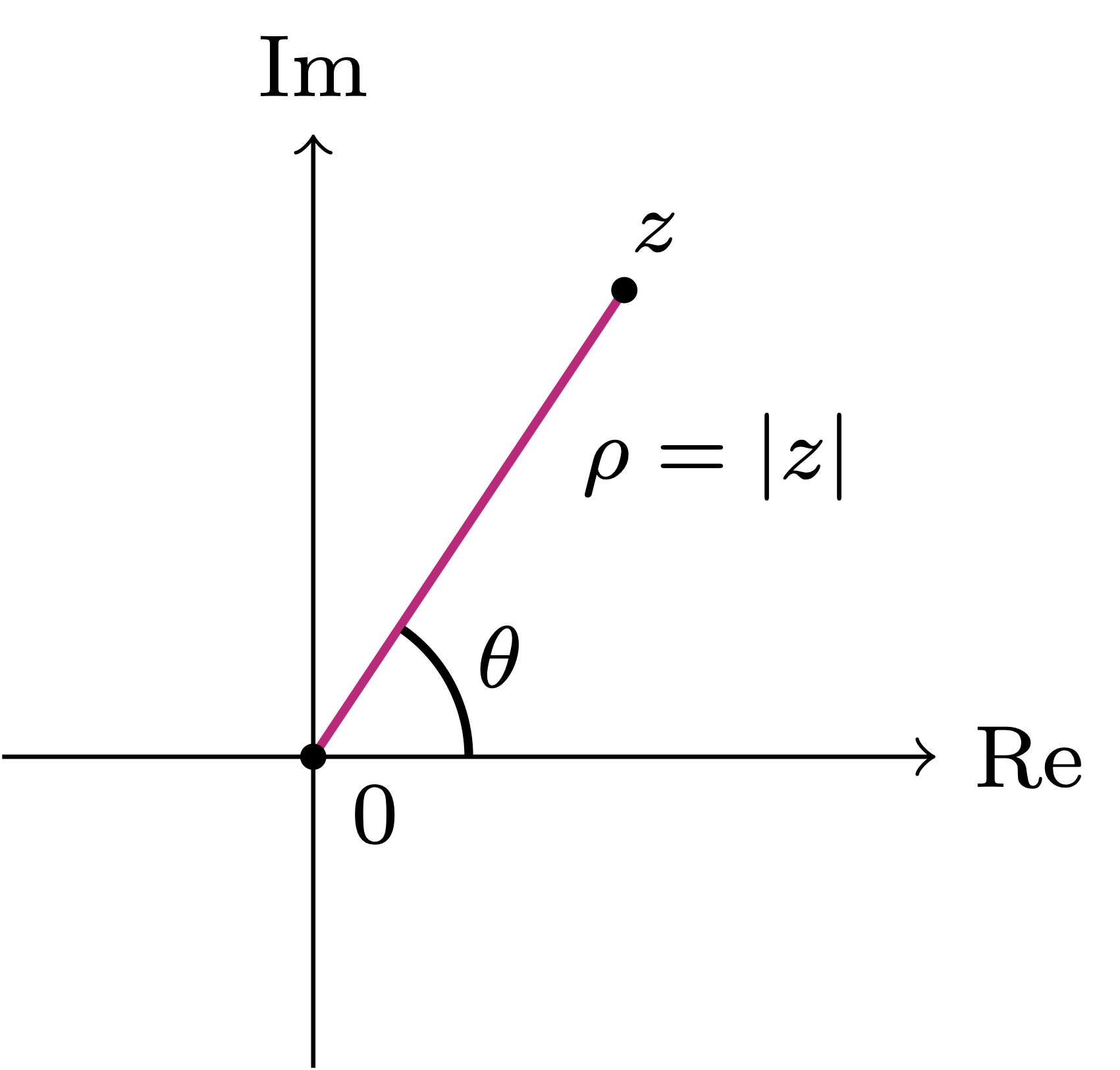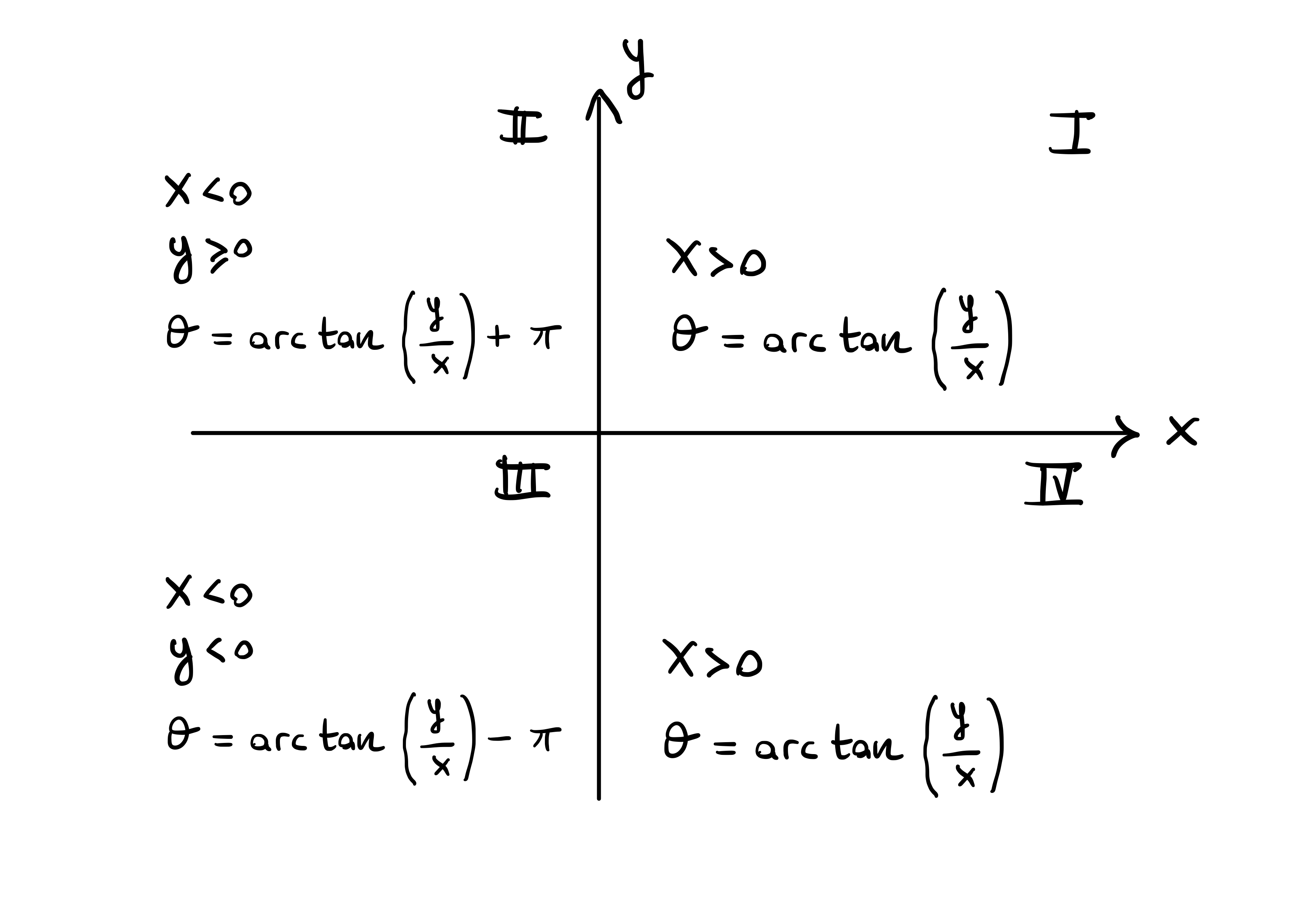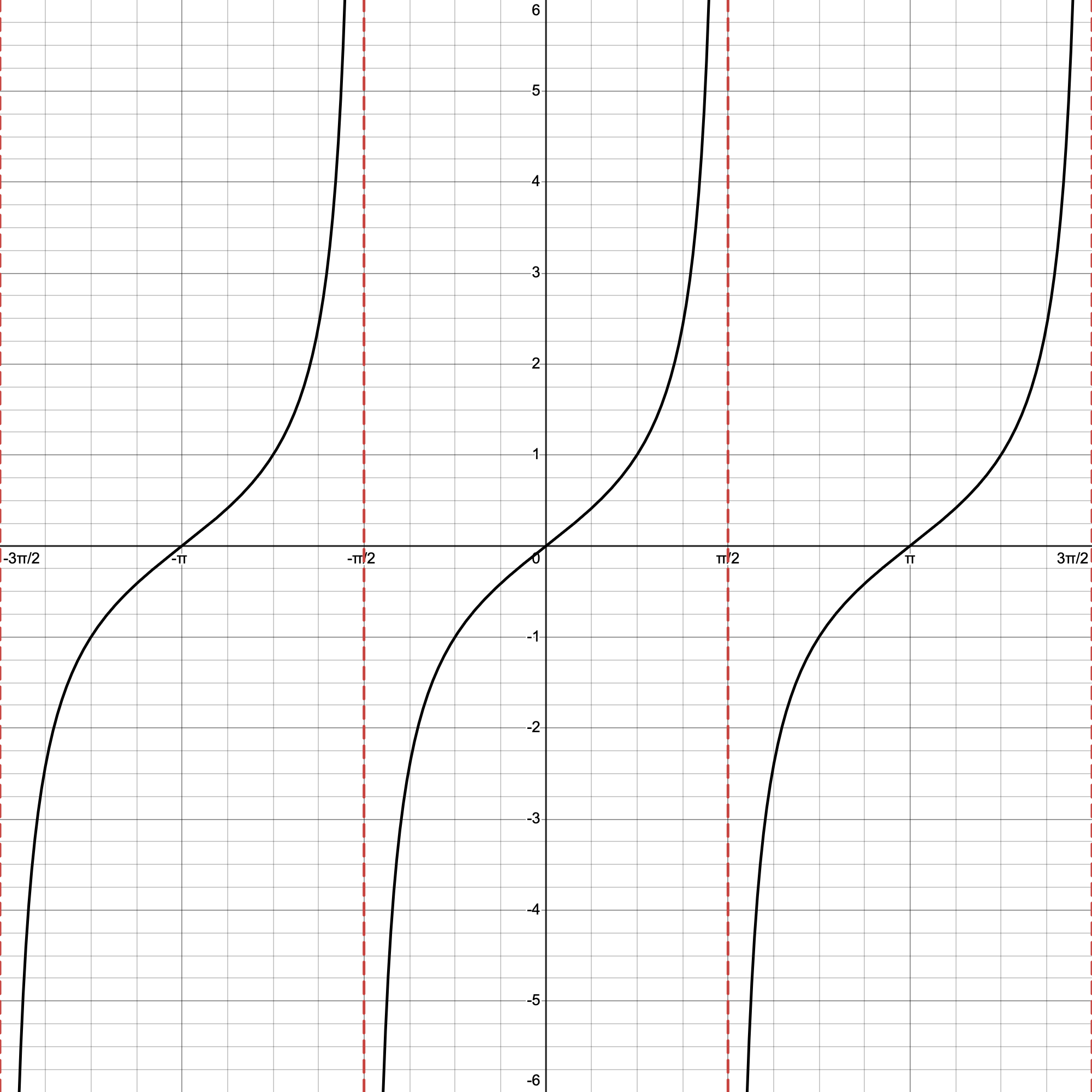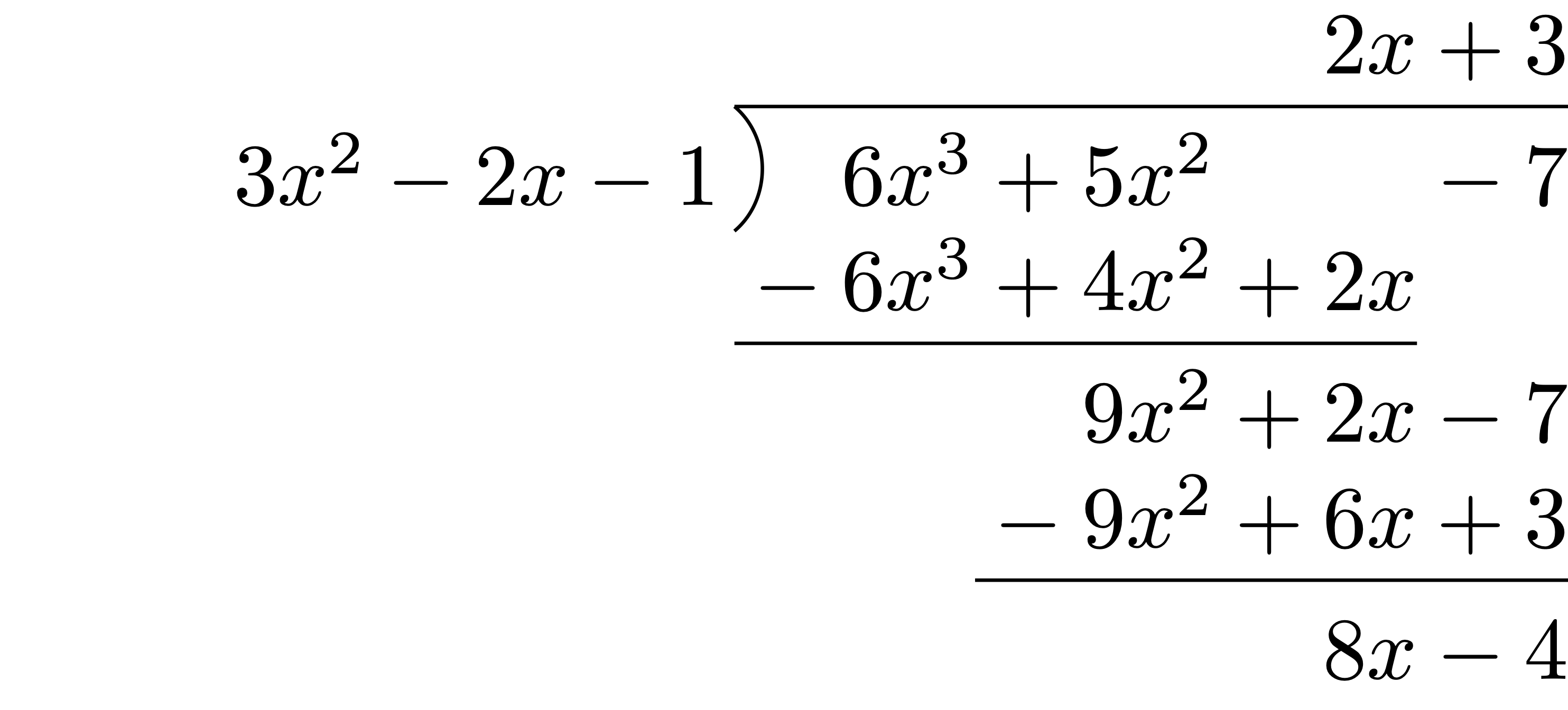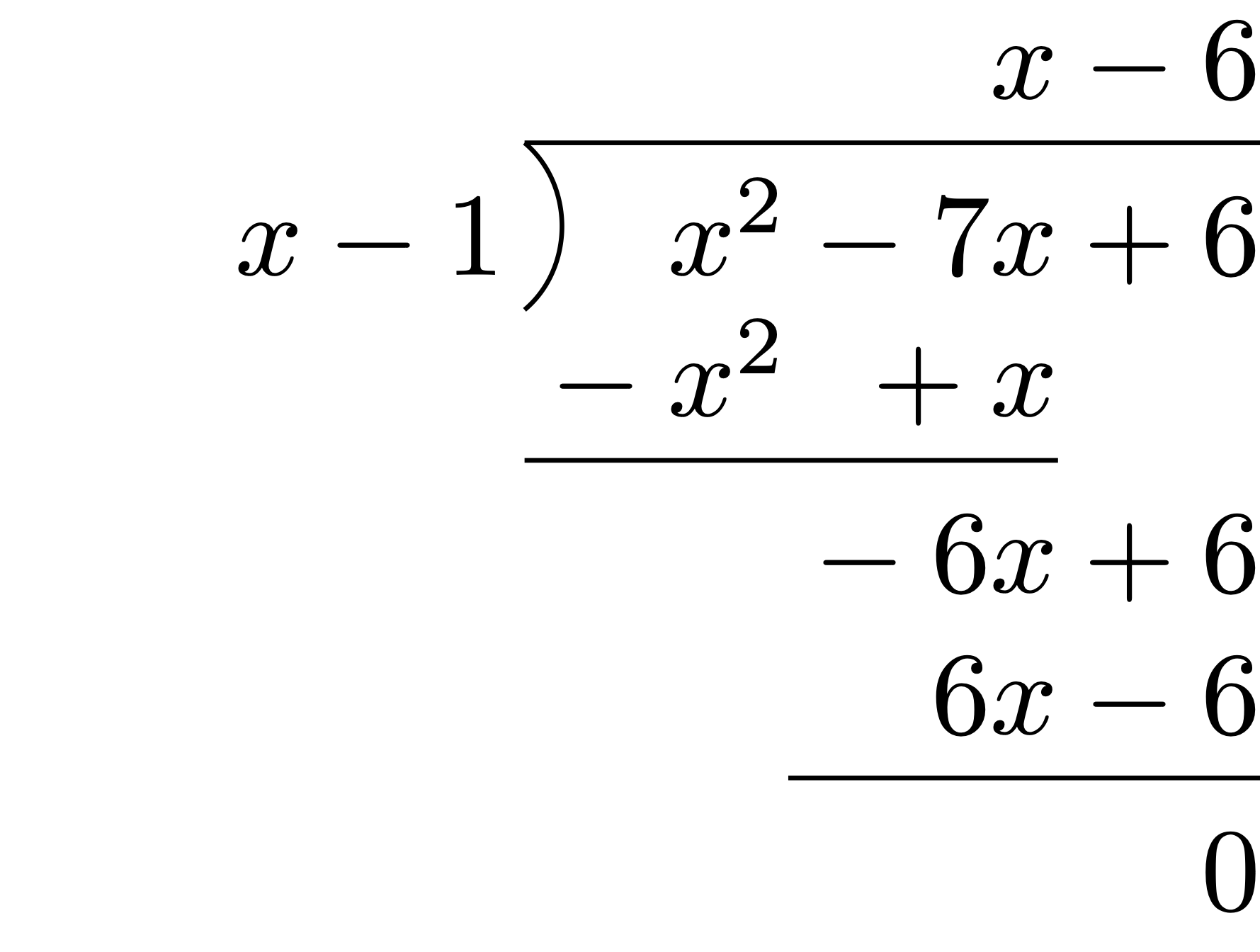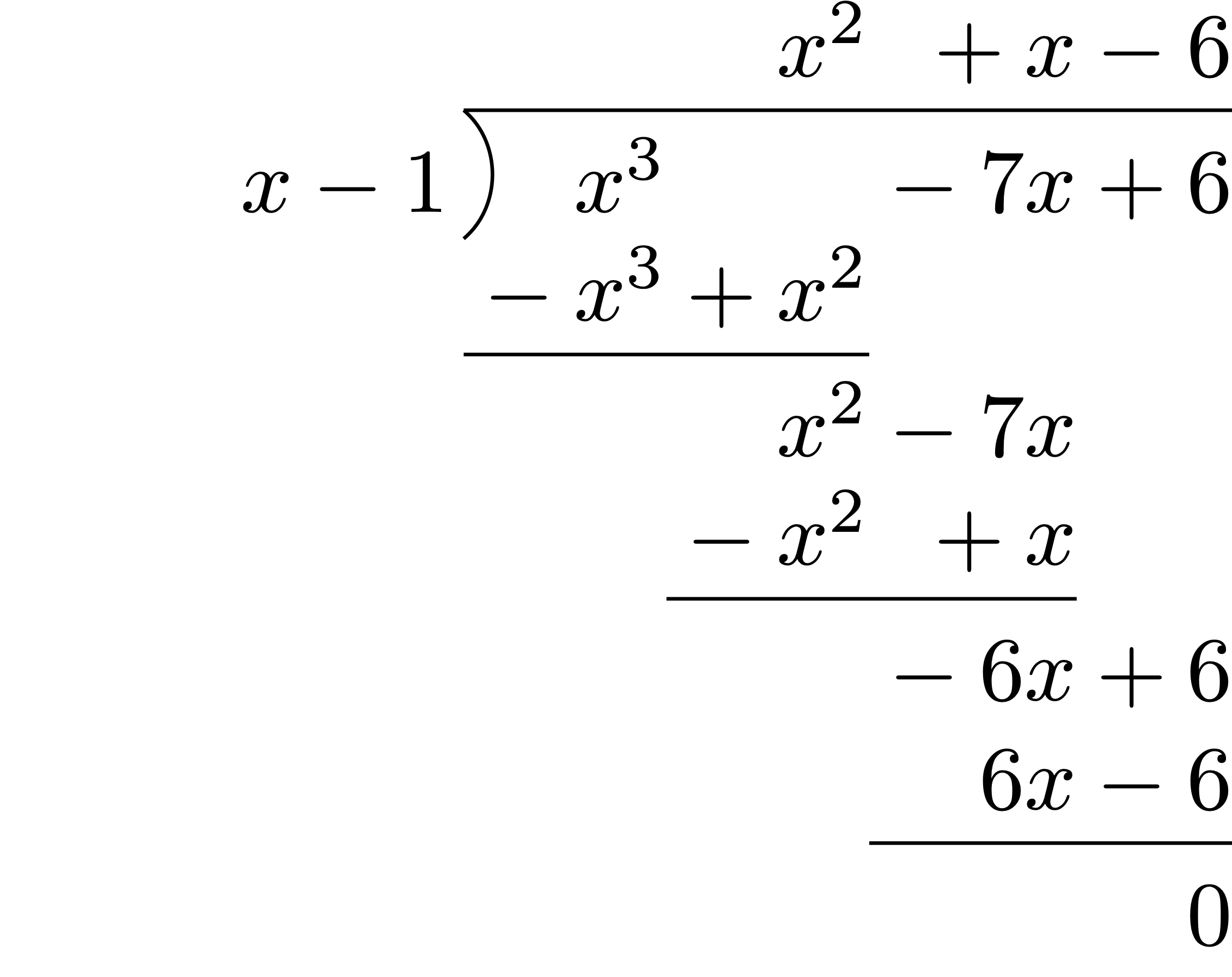5 Complex Numbers
In Section 4.4, we have proven the existence of
Question 1
The answer to the above question is no. This is because
5.1 The field
We would like to be able to do calculations with the newly introduced complex numbers, and investigate their properties. We can introduce them rigorously as a field, as we did for
Definition 2: Complex Numbers
In the above the symbol
Definition 3
For a complex number
We say that
- If
- If
In order to make the set
Definition 4: Addition in
Clearly,
Notation 5
We now want to define multiplication between complex numbers.
Remark 6: Formal calculation for multiplication in
Remark 6 motivates the following definition of multiplication.
Definition 7: Multiplication in
Clearly,
Remark 8
Example 9
Solution. Using the definition we compute
We now want to check that
Proposition 10: Additive inverse in
The proof is immediate and is left as an exercise. The multiplication requires more care.
Remark 11: Formal calculation for multiplicative inverse
Motivated by the above remark, we define inverses in
Proposition 12: Multiplicative inverse in
Proof
Important
We can now prove that
Theorem 14
Proof
(A1) To show that
(A2) The neutral element of addition is
(A3) Existence of additive inverses is given by Proposition 79.
For multiplication we have:
(M1) Commutativity and associativity of product in
(M2) The neutral element of multiplication is
(M3) Existence of multiplicative inverses is guaranteed by Proposition 12.
Finally one should check the associative property (AM). This is left as an exercise.
5.1.1 Division in
Suppose we want to divide two complex numbers
Use the formula for the inverse from Proposition 12 and compute
Proceed formally as in Remark 11, using the multiplication by
Example 15
Question. Let
Solution. We compute
Using the formula for the inverse from Proposition 12 we compute
We proceed formally, using the multiplication by
5.1.2
We have seen that
Theorem 16
Proof
Hence, it is not possible to compare two complex numbers.
5.1.3 Completeness of
One might also wonder whether
The right way to introduce completeness in
5.2 Complex conjugates
When computing inverses, we used the trick to multiply by
Definition 17: Complex conjugate
Example 18
Complex conjugates have the following properties:
Theorem 19
For all
Proof
Using the definition of addition in
Using the definition of multiplication in
Example 20
Let
Let us check that
Let us check that
5.3 The complex plane
We can represent a real number
We would like to do something similar for the complex numbers, i.e. points
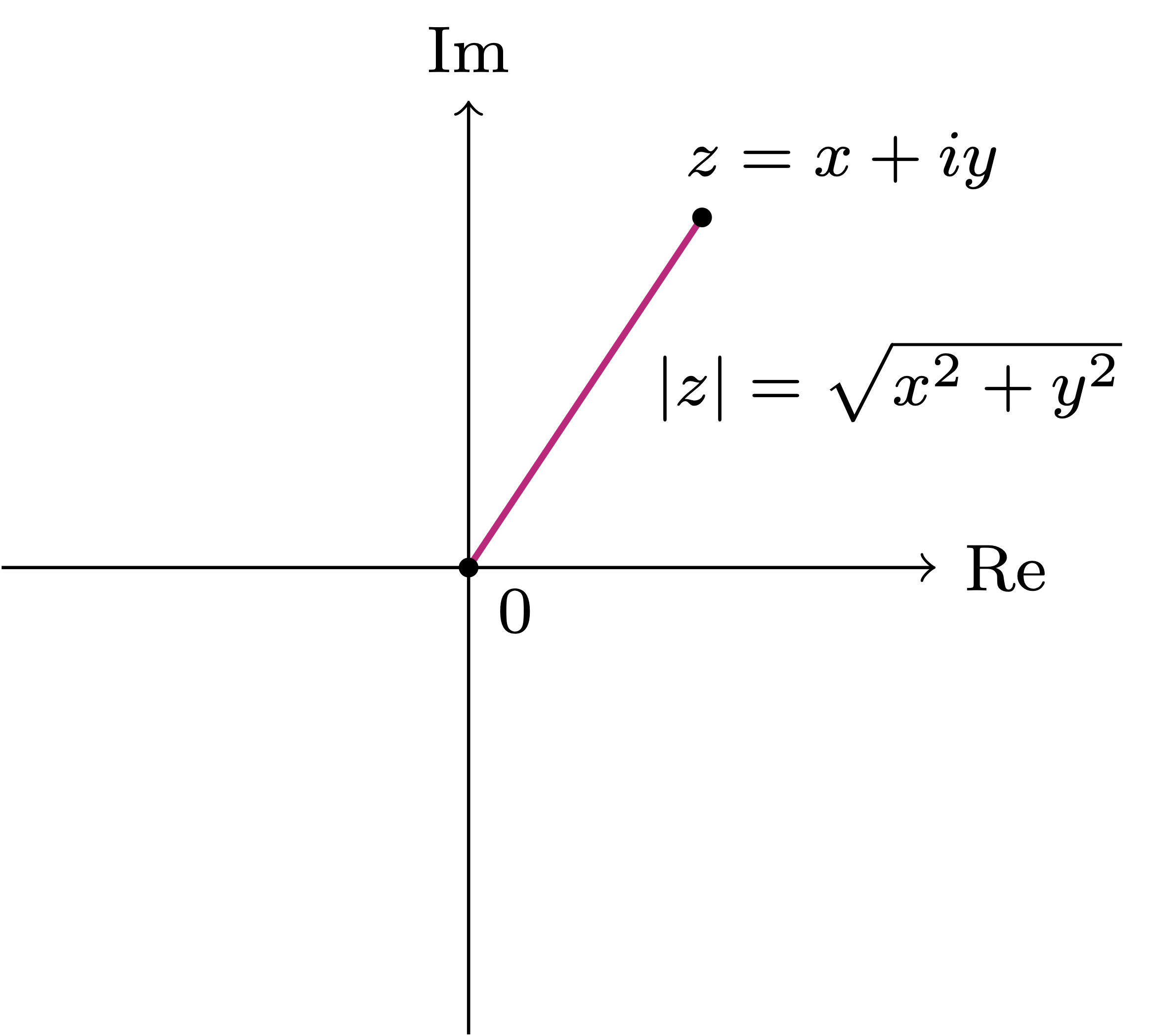
5.3.1 Distance on
The Cartesian representation allows us to introduce a distance between two complex numbers. Let us start with the distance between a complex number
Definition 21: Modulus
Note that the distance between
Remark 22: Modulus of Real numbers
We can now define the distance between two complex numbers.
Definition 23: Distance in
The geometric intuition of why the quantity
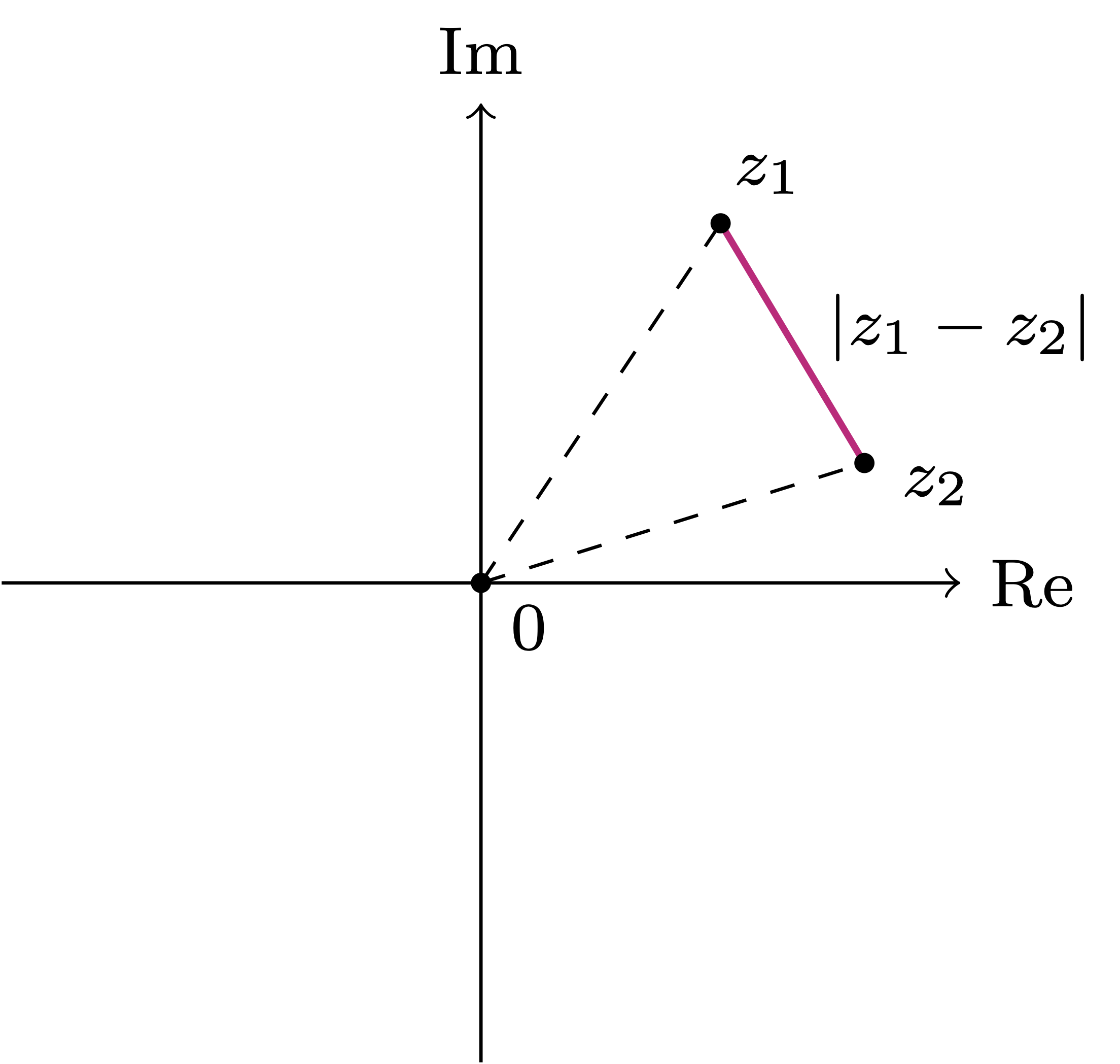
Theorem 24
Proof
Example 25
Solution. The distance is
5.3.2 Properties of modulus
The modulus has the following properties.
Theorem 26
Let
Proof
Part 2. Exercise. It easily follows from Point 1 and induction.
Part 3. Let
The modulus in
Theorem 27: Triangle inequality in
For all
Remark 28: Geometric interpretation of triangle inequality
5.4 Polar coordinates
We have seen that we can identify a complex number
We give such angle a name.
Definition 29: Argument
Warning
Remark 30: Principal Value
Example 31
We can represent any non-zero complex number in polar coordinates.
Theorem 32: Polar coordinates
The proof of Theorem 77 is trivial, and is based on basic trigonometry and definition of
Definition 33: Trigonometric form
Example 34
Solution. We have
As a consequence of Theorem 77 we obtain a formula for computing the argument.
Corollary 35: Computing
Proof
When
When
When
When
When
This exhausts all the cases, and the proof is concluded.
Example 36
Solution. Using the formula for
5.5 Exponential form
We have seen that we can represent complex numbers in
- Cartesian form
- Trigonometric form
We now introduce a third way of representing complex numbers: the exponential form. For this, we need Euler’s identity:
Theorem 37: Euler’s identity
Proof
Theorem 38
Proof
Theorem 39
Definition 40: Exponential form
Example 41
Solution. From Example 97 we know that
Remark 42: Periodicity of exponential
Proof
The exponential form is very useful for computing products and powers of complex numbers.
Proposition 43
The proof follows immediately by the properties of the exponential. Let us see some applications of Propostion 106.
Example 44
Question. Compute
Solution. We have two possibilities:
Use the binomial theorem:
A much simpler calculation is possible by using the exponential form: We know that
Definition 45: Complex exponential
The complex exponential behaves exactly as exponentials should.
Theorem 46
We still do not have the technical means to prove this Theorem. The idea is to express
Example 47
Solution. We know that
5.6 Fundamental Theorem of Algebra
We started the introduction to complex numbers with the following question:
Question 48
The answer is no. For this reason we introduced the complex number
It turns out that the set
Theorem 49: Fundamental theorem of algebra
Theorem 111 says that equation (5.9) admits
- We call these solutions zeros, or also roots.
- We call the expression (5.10) a factorization of the polynomial
Several proofs of Theorem 111 exist in the literature, but they all use mathematical tools which are out of reach for now. Therefore we will not show a proof. For example one can prove Theorem 111 by
- Liouville’s theorem (complex analysis)
- Homotopy arguments (general topology)
- Fundamental Theorem of Galois Theory (algebra)
Example 50
Solution. The equation
Example 51
Solution The associated polynomial equation is
Definition 52: Multiplicity
Example 53
The equation
5.7 Solving polynomial equations
The non-factorized version of the polynomial
Question 54
Answer: There is no general formula to solve (5.15) when
Theorem 55: Abel-Ruffini
Similarly to the Fundamental Theorem of Algebra, the proof of the Abel-Ruffini Theorem is out of reach for now. A proof can be carried out, for example, using Galois Theory.
There are however explicit formulas for solving (5.15) when
5.7.1 Quadratic polynomials
Consider polynomial equations of order
Proposition 56: Quadratic formula
- If
- If
- If
In all cases, the polynomial at (5.16) factorizes as
Example 57
Question. Solve the following equations:
Solution.
We have that
We have that
We have
So far we have considered the polynomial equation
Question 58
If
Proposition 59: Quadratic formula with complex coefficients
Remark 60
To this end, note that
- If
- If
- If
Therefore the solutions
Example 61
Solution. We have
In the above example it was a bit laborious to compute
5.7.2 Higher order polynomials
Consider now polynomial equations

A more productive use of time is learning how to perform long polynomial division. A quick tutorial is available here: Polynomial_division.pdf.
Example 62
Sometimes, it is possible to solve equations of degree higher than 2, in case it is obvious from inspection that a certain number is a solution, e.g., when
Example 63
Question. Consider the equation
- Check whether
- Using your answer from Point 1, and polynomial division, find all the solutions.
Solution.
By direct inspection we see that
Since
Example 64
Solution. It is easy to see
Example 65
Question. Consider the equation
- Check whether
- By using polynomial division with complex coefficients, find all the solutions.
Solution.
By direct inspection, we see that
Since
5.8 Roots of unity
Problem
Note that
However, the Fundamental Theorem of Algebra, see Theorem 111, tells us that there are
Question 66
Example 67
The trick to find all
Theorem 68
Proof
Definition 69
Example 70
Solution. The
Example 71
Solution. The
5.9 Roots in
Let
Theorem 72
Proof
Warning: The n-th root function is multi-valued
Example 73
Solution. Let
Example 74
Solution. Set

